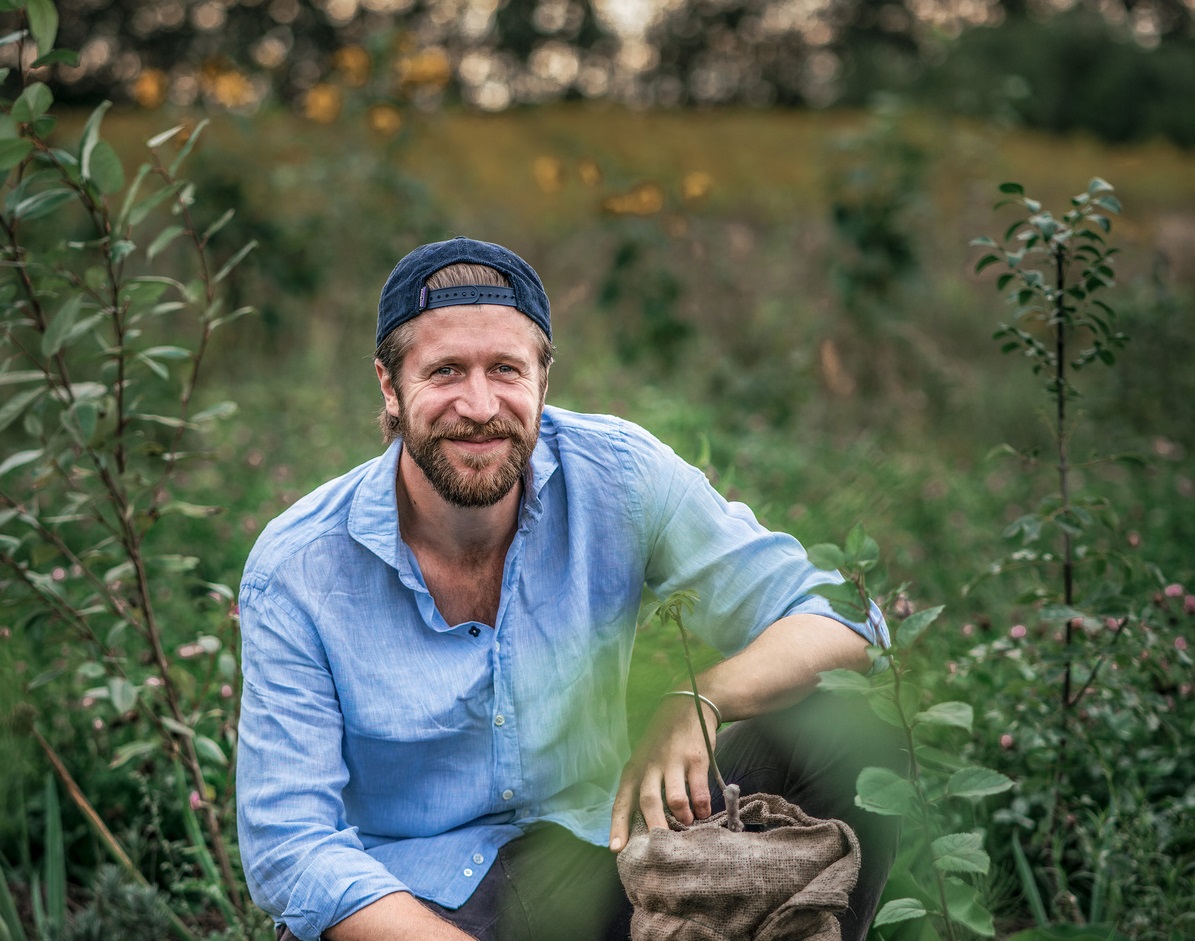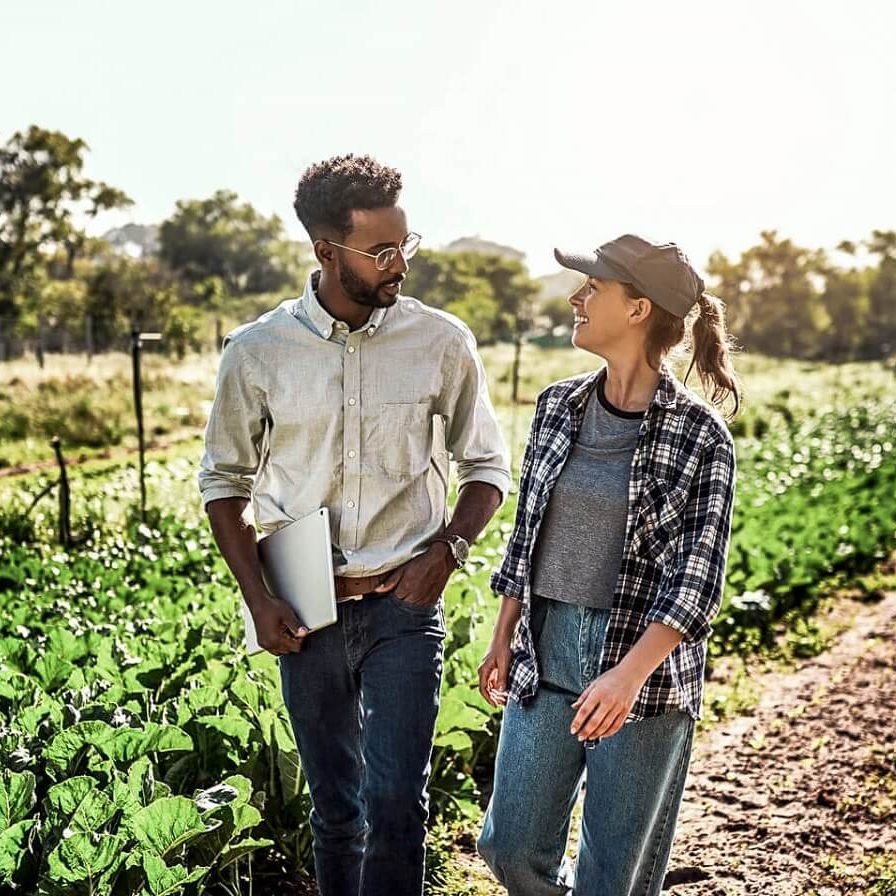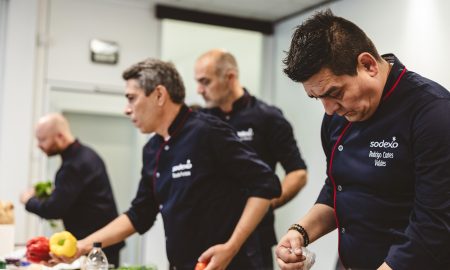Benedikt Bösel likes to start his lectures with the fact that he used to be a banker. Today he is an organic farmer in Alt Madlitz, Brandenburg. The only thing that remains from those days is his gel hairdo, which he usually hides under an inverted baseball cap. Arguably, it takes drastic change if you want to make a difference – especially when the conditions are very unfavorable.
Bösel’s 3,000-hectare agricultural and forestry company Gut&Bösel is located in the driest part of Germany. But the organic farmer still sees the way land is used as the solution to many of the issues of our time, from climate change and biodiversity loss to hunger and unequal opportunity. He has dedicated himself to regenerative agriculture and is one of the pioneers in this field. In the meantime, he also supplies many restaurants with his products via the 2020 platform.

Image: Emanuel Finckenstein, Gut&Bösel
What is regenerative food?
But what is behind this special form of agriculture? How can it save the planet? And what does all this have to do with gastronomy? Regenerative food, in other words, the production of food according to the criteria of regenerative agriculture, is not just a fad, but rather the latest trend described by Hanni Rützler in her highly acclaimed Food Report 2024. It is also perhaps the most promising in the fight against climate change.
“The problem is that the world’s population is growing while the quality of the soil, and with it the amount of fertile soil, is declining. Healthy soils are needed to better mitigate climate change, which brings heavy rainfall and droughts. That’s exactly what regenerative food is all about,” explains the food expert. This is exactly why solutions are urgently needed. According to the Food and Agriculture Organization of the United Nations (FAO), soil erosion could lead to a loss of ten percent of global plant production by 2050.
Aim for high-yield, healthy soils and biodiversity
In contrast to food trends such as plant-based food or vegan mania, regenerative food does not focus on the food that ends up on our plates, but instead on the way it is produced.
Sieh dir diesen Beitrag auf Instagram an
As a result, it is no longer purely a matter of eating sustainably to preserve that which already exists. The damage caused by industrialization is already too great for this to be the case. Instead, the aim is to “heal” the planet by minimizing the impact of agriculture on climate change and promoting biodiversity. Regenerative agriculture therefore relies on “organic instead of synthetic fertilization, crop rotation that promotes biodiversity, as well as on soil coverage and rooting,” is how the trend researcher summarizes the most important measures.
Instead of leaching arable soils and releasing large amounts of CO2, the aim is to do the opposite. In other words, the soil should regenerate, become more resilient and (again) more productive. What’s more, large amounts of carbon are to be sequestered in the soil by building up humus – one of the most effective measures for climate protection.
Regenerative food: global interest is growing
The trend is still in its infancy, which is especially evident in the lack of standards. As a result, the environmental benefits cannot yet be measured in concrete terms. However, with increasing interest, both in Europe and worldwide, an increasing number of organizations and companies are joining forces at an international level, such as the Regenerative Organic Alliance, to develop meaningful, regionally adapted standards. The Regenerative Organic Certification ROC is an important first step [Ecovia intelligence, 2023].
To push the issue further, proprietary apps such as Foodroots or information platforms such as Regeneration Switzerland and Solify have been developed. On the one hand, this is where farmers and customers can network, but on the other hand, it is also intended to reach the general public.

Image: White Oak
The number of farms such as Gut&Bösel that use regenerative methods is also increasing. Start-ups and farmers also want to revolutionize agriculture in the USA. Will Harris, who runs the sixth-generation family farm White Oak Pastures in Bluffton, Georgia, is one of the pioneers of the regenerative agriculture movement. By cooperating with one of the largest solar power producers in the country, he has succeeded in combining pastures and solar panels. This makes it possible to produce meat while retaining carbon in the soil and restoring biodiversity.
Making good soil through donation
However, regenerative food is not just a promising solution in the fight against climate change; it also ensures diversity of the plant species we consume and as a result more variety on our plates,” writes Hanni Rützler in her report. This also makes regenerative food interesting for the gastronomy industry. Plus, a growing number of people are becoming aware that protecting the climate has become one of the most pressing issues of our time. Guests therefore want to know more about where the products and ingredients come from and how they were produced. If restaurateurs can credibly demonstrate where their food comes from and that it has been produced in a regenerative and sustainable manner, this may give them a competitive advantage.
Sieh dir diesen Beitrag auf Instagram an
The Zero Foodprint initiative (ZFP) works with the foodservice and food industry to promote healthy soils and better food. By donating one percent of the restaurant bill, restaurateurs have the opportunity to make an important contribution to climate protection. ZFP uses the revenue to support regional farmers who are already using regenerative methods or are in the process of converting their farms to regenerative agriculture. This is good for soil, the climate and our food.















